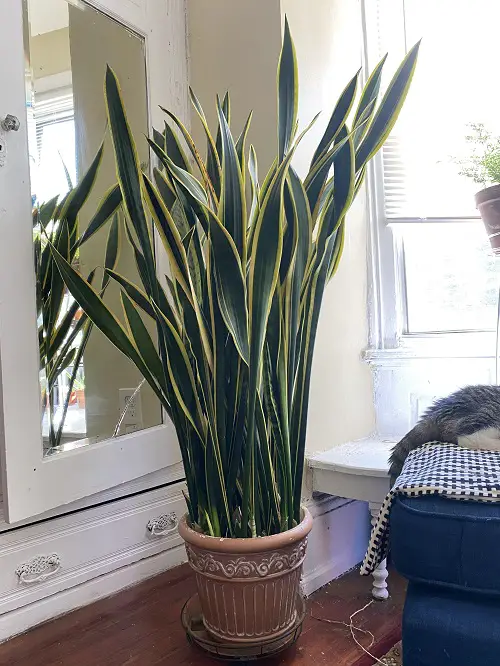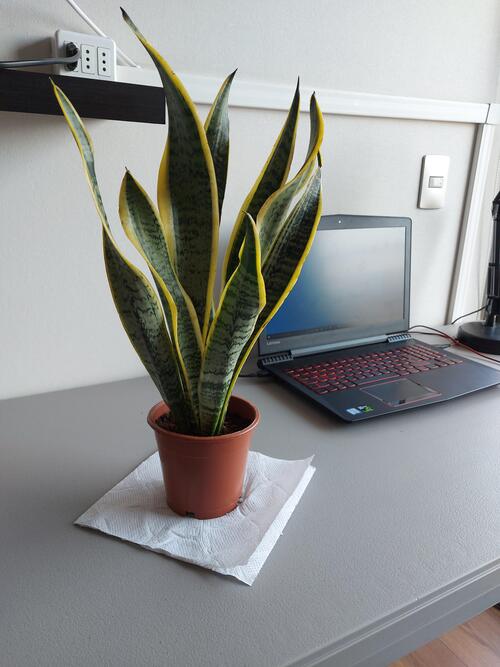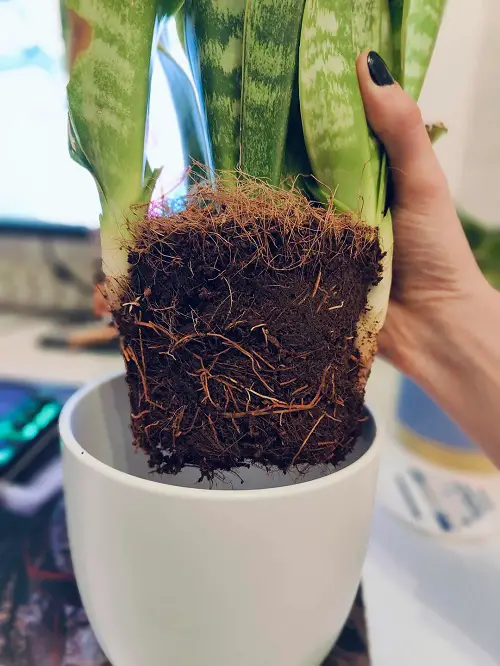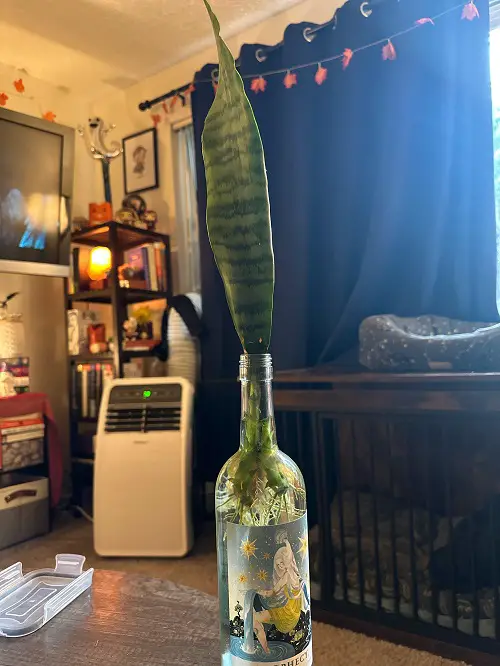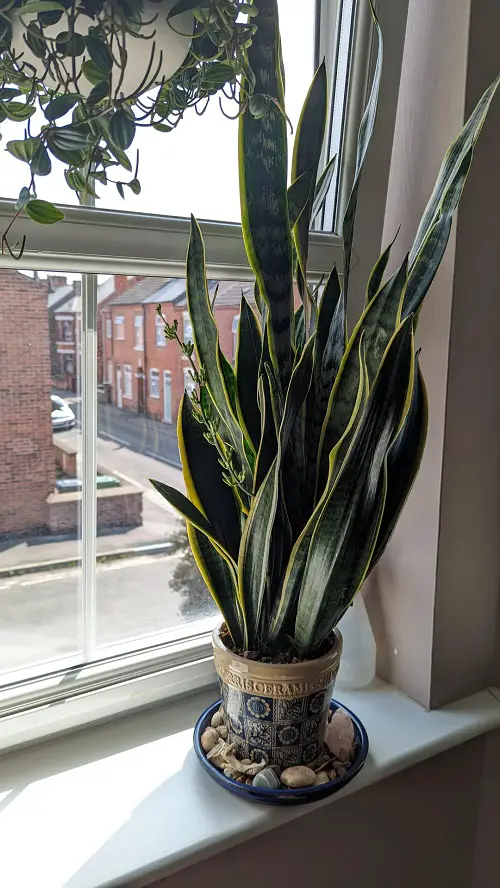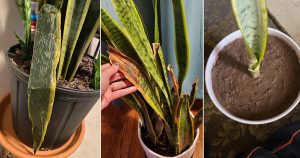If you are in love with long-lived succulents, here we have some useful information regarding Snake plant care and tips!
Although popular in many parts of the world. Earlier in the Northeastern region of India, people mysteriously believed that having snake plants in home gardens attracts snakes into their homes! But now this is lifted by the gain in popularity of this houseplant during the recent years. Let us make it more simple for you!
Snake Plant—Key Facts
| Common Name | Mother-in-law’s tongue |
| Botanical Name | Dracaena trifasciata |
| Origin | West Africa |
| Plant Type | Evergreen, Perennial and Houseplant |
| Dimension | 2-5 ft. tall |
| Indoor/ Outdoor | Both |
| Sunlight | Indirect Sunlight |
| Soil | Mostly survives in all kinds of soil but prefers sandy soil. |
| Benefits | Easy to care and grow, Best for beginners |
| Temperature | 65°F – 80°F |
| Watering | Depending on the dryness of the soil |
| Blooming Season | Spring (April-October) |
| Flower Color | White |
| Toxicity | Toxic to pets |
Snake Plant Information
The most popular house plant! Dark green-colored straight long plants with sword-like leaves and yellow borders. These plants are famous for being used for all kinds of home decor. Accordingly, they are easy to grow and maintain with benefits like purifying the air in your home.
Today the snake plant is available in all parts of the world, however, it is native to West Africa. Surprisingly, there are more than 70 species of snake plants originating in South Africa, Southern Asia, and Madagascar. With many variations like height, the color pattern of the leaves, the structure of the plant and leaf, etc.
Snake plant is a great fit for newbies because of their compact size and easy-going nature. They are also good for small apartments or tight spots, so you can enjoy their beauty without needing a lot of space.
Snake Plant Pot Size
Determining a definite pot size is a crucial decision because the snake plant undergoes division by offshoots from the side base sections. So, shallow pots with wide diameters and plenty of drainage holes are preferably great for growing them.
Type of Pot
Always choose sturdy pots made out of ceramic, terracotta, or clay. since the rooting system is very adventitious plastic pots are not durable for them. Terracotta pots are the best because they have the nature to absorb excess moisture and can help overwater.
Repotting
After planting a snake plant, you will observe that they grow slightly fast in comparison to other succulents or cacti. So, you will see that your pot is filling up with new and old shoots. And when there is no more space left in the pot that is when you should repot your snake plant.
Again to repot your snake plant select a pot twice the size of the old pot. Also, you might need to separate some offshoots into new pots if you want to multiply your snake plants.
Propagating Snake Plant
The most favorable time to propagate your snake plants is during the spring season for both cuttings and offshoots. Let us see how!
Cuttings
First gather all the tools like cutters, trowels, hand gloves, or any other equipment and sanitize them. Cut off a mature leaf with a sterile cutter from the base of the plant. Now there are two ways to pursue this further; you may either submerge your cuttings in water for a few days until the roots start to appear and then plant them in a potting mixture or rather you can skip this method and directly plant your cuttings in a good potting mixture.
Again, you can also make several cuttings out of your single leaf strand and propagate them separately to have more plants in less time! So, this technique is quite simple and easy. eventually, the roots will start to appear after 2-3 weeks in water and less than 3 weeks in soil.
Tip: If you are keeping your cuttings in water for rooting then kindly make sure to change the water every day and you can also use filtered water rather than tap water for better results.
Offshoots
In a mature snake plant, you will observe lots of baby snake plants or offshoots from the side of the base. So, the simplest way to propagate from offshoots is when the plant needs repotting due to the high density of offshoots. Two things at a time!
Use a trowel to separate the offshoots from the mother plant and plant them in separate pots with a sandy soil potting mixture for fast root development. This way you can simultaneously repot and propagate your snake plant. Embrace the joy!
Requirements for Growing Snake Plant
Sunlight
Snake plants are bright spot lovers! They grow best in bright spaces with 8 to 10 hours of indirect sunlight and do well in early morning direct sunlight as well. However, they can also survive in low-light areas and still try to avoid dark spaces
Soil
Snake plants mostly prefer a loose, well-drained potting soil mix. You can also add sand, and perlite to your garden soil to make it loose and porous. Moreover, all kinds of cactus potting mixtures are also good. Lastly, avoid soil mixes that contain a high amount of cocopeat, which retains too much water.
Water
Watering is not so critical. Simply check the soil with a stick if it is dry or not and if dry then you can water it. A super cool piece of advice is to keep your snake plants outdoors during the rainy season because they love rainwater and it also enhances their healthy growth and development. However, make sure that after keeping it in the rain don’t keep them in shady places or else the roots might rot.
During winter, check the plant’s soil mix every two weeks or so—the plant might need to be watered only once a month. If you notice its leaves are brittle and dry, water immediately.
Tip: Too much water or letting the plant sit in water will rot its root system. Yellowing leaves are an early sign of overwatering.
Temperature
Snake plants grow best in warm temperatures between 65°F and 80°F. They also do well in tropical climates. However, they won’t tolerate frost, and prolonged exposure to less than 50°F.
Lastly, Snake plants do fine with average household humidity between 30 and 50 percent.
Snake Plant Care
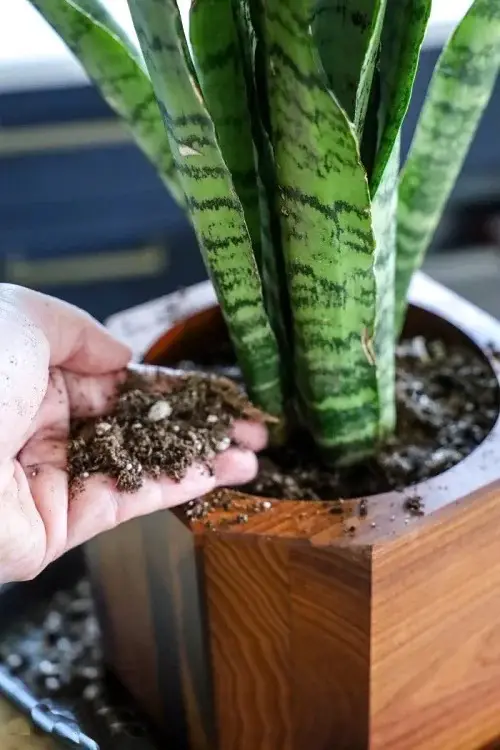
Fertilizer
Mostly, it is seen that they do well without fertilizers, although a good potting mixture helps them to grow. However, for long terms and keeping them indoors they require some amount of fertilizers. So, it is well and good to feed your snake plant once in spring and once in mid-summer with a balanced diet.
Pruning
Pruning snake plants during the growing season is good to encourage and give space for new growth. To control height, remove the tallest leaves at the soil line with a sterile cutting tool. Timely removal of damaged or dead leaves is a good practice.
But you can dust the leaves regularly or wipe them with a wet cloth and keep an eye out for yellowing and mushy stems.
Fact: Pruning during winter can cause damage to the plant.
Pests and Diseases
Snake plants are susceptible to common houseplant pests such as scales, gnats, spider mites, aphids, mealybugs, and whiteflies. Most of them can be removed by hand or with a gentle spray of water or neem oil and eucalyptus oil.
You can share some tips and tricks of your own if you use them for your snake plants in the comments below. Sharing is caring!

